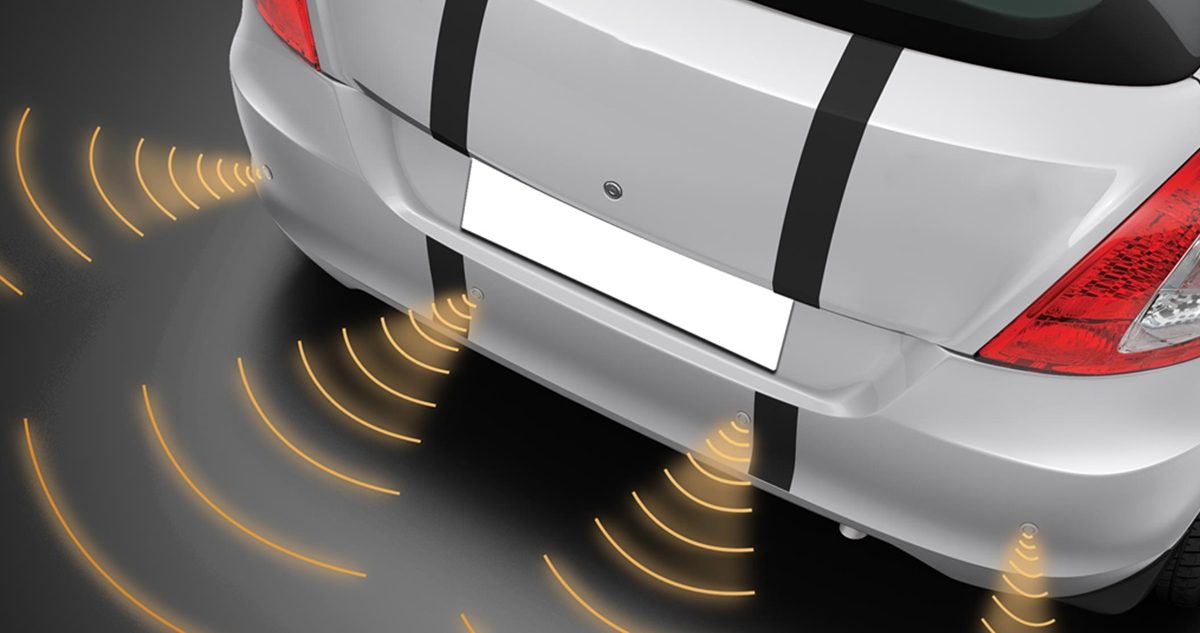Parking sensors have been a standard feature on most vehicles for decades now, but they’re usually overlooked as far as auto accessories go. If you’re curious about how they work, you’ve come to the right place!
Car parking sensors use ultrasonic waves to measure the distance between a vehicle and nearby obstacles, assisting drivers to navigate narrow parking spots without causing damage or injury. Wall-mounted garage parking sensors work the same way.
This guide will teach you all about parking sensors and how they work. You’ll also discover what components they have inside and how they stack up against reverse cameras.
Let’s get to it!
What Does a Parking Sensor Do?
Firstly, let’s get on the same page about what parking sensors are and what they do. Parking sensors, sometimes called car distance sensors, are designed to measure the distance between your car and surrounding objects.
In other words, they are proximity sensors that let you know when your car is too close to something else, like other vehicles, pedestrians, walls, and more.
Most people call it a ‘parking’ sensor because the most common use of these devices is when you’re parking your car in a narrow spot, especially when you’re reversing.
The sensors help you safely navigate the parking spot so you don't damage your vehicle or anything else.
Parking sensors have been used for decades, and most cars include them as a standard feature, however, they have evolved over the years.
Firstly, parking sensors aren’t just on the back of cars anymore. Many vehicles have them on:
- The back and the front bumpers
- The front and rear corners on both sides
Having more sensors means that you’ll get a more accurate warning. For instance, not only will you know that the car’s rear is close to the wall, but the additional sensors will also inform you if your bumper's left or right side is getting too close to an object or wall.
Besides that, you’ll also find parking sensors for garage walls.
These sensors work the same way but are mounted to your garage wall. As your car approaches the wall, the sensor will flash a yellow or red light to let you know when you’re getting too close.
So, as you can see, the basic premise of parking sensors has remained the same for decades, but how people use them has come a long way.
How Do Car Distance Sensors Work?
The easiest way to understand how parking sensors work in a car or on a garage wall is to think of them as sonar or radar for your vehicle.
More specifically, the parking sensors emit ultrasonic waves that bounce off obstacles, whether a wall, another vehicle, or even your garbage bin.
The parking sensor can measure how close the obstacles are by calculating how long the ultrasonic waves take to bounce back.
So, to put it simply, when the ultrasonic waves take longer to bounce back, the sensor knows that the obstacle is still far away.
Your parking sensor will then communicate that information using a buzzer and, sometimes, a display on your dashboard.
As you’re reversing and getting closer to the obstacle, the buzzer will beep faster, so you’ll stop. Meanwhile, the display will light up to signal the same information visually.
Keep in mind that parking sensors only work within a limited range. They’ll turn on when you put your car into its reverse gear, but they can’t sense items that are too far away.
To give you a real-world example, Mazda CX 5 parking sensors only have a maximum range of 100-150 cm.
That might not sound like much at first glance, but remember that you don't need stronger sensors when just trying to park your car safely.
What Is Inside a Parking Sensor?
Car and garage parking sensors aren’t very complex, even though they’ve been around for decades.
They generally only consist of the following:
- Ultrasonic sensors: These are the sensors that emit and receive the ultrasonic waves necessary to measure your car's distance from nearby obstacles. Most cars have at least two at the rear. However, some might have many more in the corners of the car's front and back.
- A controller: Parking sensor systems also have a controller. That’s essentially a tiny computer that acts as the system’s brain. The controller does all the calculations to determine how far your car is from nearby obstacles.
- A buzzer or display: This entire system won’t be complete without a way to alert you that your car is about to hit something. Typically, you’ll have a buzzer that beeps faster the closer you get to a nearby obstacle, and most cars will have a display to warn you visually.
Which Is Better, Parking Sensors or Reverse Cameras?
Parking sensors are still a standard feature in most cars today, but they’re not the only ones. Many vehicles now have reverse cameras that turn on when you try to back up into a parking spot.
Naturally, there’s an ongoing debate about parking sensors or reverse cameras being better.
Like most car features, it boils down to your style and preference.
Some people prefer reverse cameras because they get a visual of what's behind them as they park their cars. Others prefer parking sensors because ultrasonic waves provide a more accurate sense of obstacles' proximity.
Can You Add Parking Sensors to a Car?
If your car doesn’t have parking sensors, there’s good news for you. You can buy aftermarket rear and front parking sensors to fix onto your vehicle.
As you saw above, parking sensors are standard; they've been around for decades and have very few components. That means you'll have no problems finding an affordable or cheap aftermarket sensor.
Not sure where to buy aftermarket parking sensors? Use CarpartAU’s Directory! It will show you where all your nearest auto accessories shops are, so you can shop around for the best parking sensors for your needs.
By Ray Hasbollah

